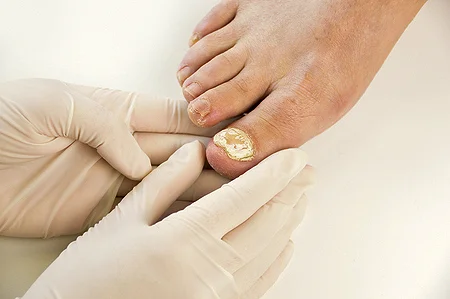Table of Contents
Introduction - Fungal Toenails
A toenail fungus will get under the surface of the nail where it takes hold and may even spread to other toenails. Left untreated, the infection may make it difficult to walk and work. The thicker toenails are hard to trim and make it painful to wear shoes.
Fungal nail is contagious and you are vulnerable in public areas like swimming pools, showers, spas and locker rooms. People with diabetes or who suffer from circulatory problems or immune deficiency are prone to toenail fungus.
Fungal Toenails - Symptoms
Toenail fungus causes many unpleasant symptoms including:
- Change in toenail appearance, texture and color
- Nail thickening
- Unpleasant odor
- Debris noticeable under the nail plate
- White marks on the nail plate
Treating Fungal Toenails
Home treatments including over-the-counter antifungal creams may ease the symptoms of toenail fungus, but full healing can only be obtained through a podiatrist’s care.
After taking a culture from the nail to determine the cause of the problem, we will treat it with topical and/or oral medication. Debridement, or removal of the diseased nail matter and its degree, is an effective treatment. Surgery may even be required to remove the nail permanently and prevent the regrowth of a deformed nail.
Preventing Fungal Toenails
Toenail fungus can be prevented with these commonsense tips:
- Wash your feet with warm soapy water every day, and dry thoroughly.
- Always protect your feet in public areas with shower shoes or flip-flops
- Wear clean socks every day and change more often if they become sweaty
- Trim nails straight across and short enough so that they don’t extend beyond the toe tip
- Choose socks made of synthetic fiber to wick moisture away from the skin
- Don’t use polish on those nails that may have an infection



